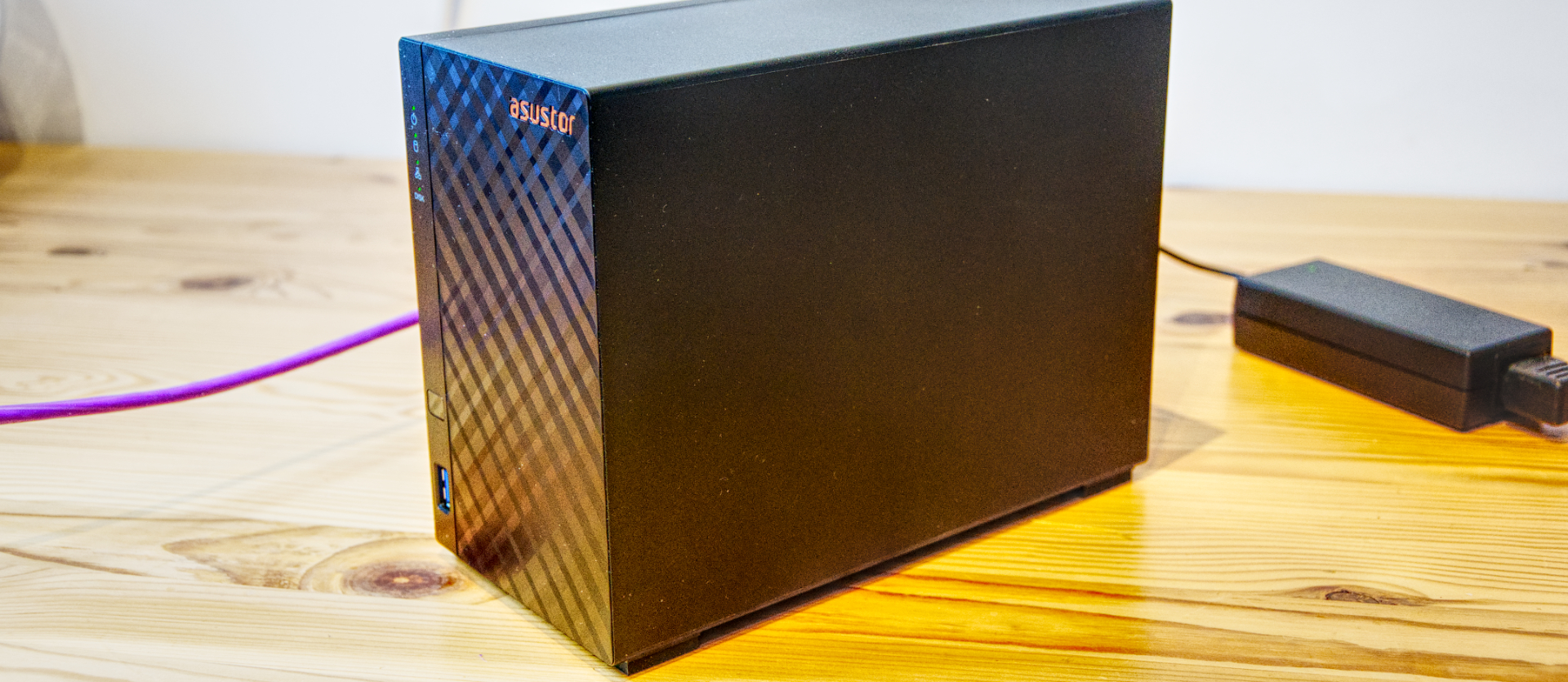TechRadar Verdict
The lack of SSD caching stymies what might have been a perfect solution for many, but it's still a decent device that delivers much-needed opposition to Synology and others.
Pros
- +
Easy to configure
- +
1GB DDR4 RAM
- +
2.5GbE LAN port
Cons
- -
Noisy
- -
No SSD caching
- -
RAM can’t be upgraded
Why you can trust TechRadar
For far too many years, Synology has dominated the small NAS space for both small business and home users. While their products are well defined and workman-like, they’re not an especially good value, and the pace of technological development in its products has been glacial.
For users to see more affordable and innovative solutions, Synology needs credible opposition, not just the token NAS devices put out by the drive making brands.
Asus, or more specifically its Asustor sub-brand, has been one of the companies confronting Synology on a regular basis, and today we’ll be reviewing one of its latest NAS solutions.
Purely on price, the AS1102T looks like a highly desirable option, but the devil is certainly in the detail with this device.
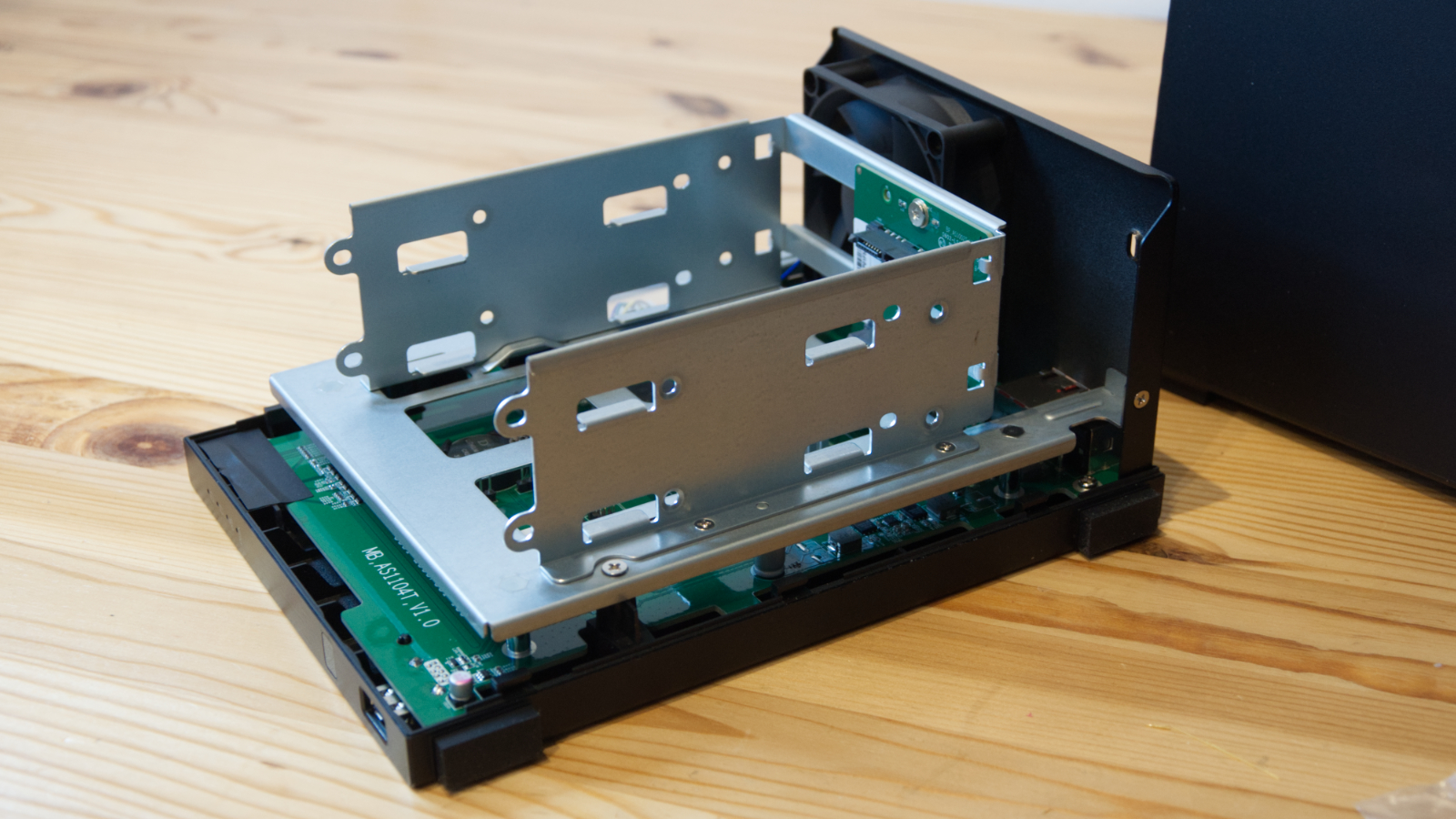
Pricing and availability
In the UK, a typical price for the AS1102T is somewhere between £149 and £161, for a unit without any drives pre-installed. On Amazon.com the asking price is $179.99, and it’s a similar cost on Newegg.com.
Already these units are being snapped up quickly, so you may find stock is limited in some regions.
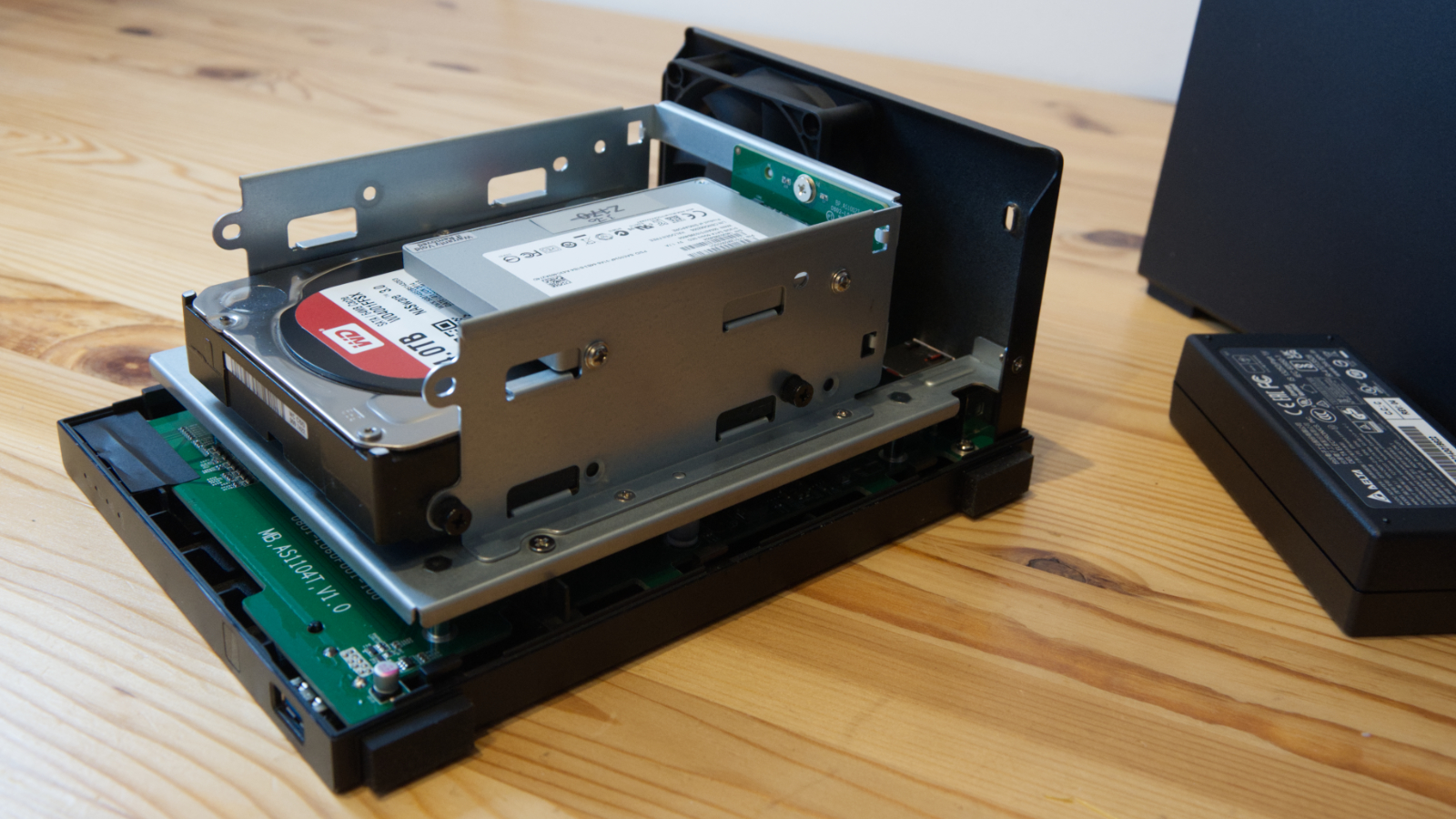
Design and features
There are various approaches that NAS box makers take when building a NAS, and Asustor uses a similar one to Synology, a steel frame boxed in lightweight plastic.
Since this design has open bays or trays, this makes for a remarkably similar structure that can be accessed internally by removing two thumbscrews on the rear of the unit.
With these removed, a large portion of the outer case comes away to reveal the internal cage, the board, a riser card with two SATA drive connectors.
There is room for two 3.5 hard drives, and screws are included to secure those to the frame.
While the documentation doesn’t explicitly mention them, you can install 2.5-inch mechanisms, though no screws are in the box that fit those.
The 1GB of DDR4 memory is surface mounted to the mainboard, negating the possibility of being expanded further, sadly.
Here is the configuration of the Asustor DRIVESTOR 2 (AS1102T) TechRadar reviewed:
CPU: Realtek RTD1296 Quad-Core 1.4 GHz CPU
RAM: 1 GB DDR4 non-ECC (not upgradable), 8GB eMMC
Storage: 2 x 3.5" SATA HDD (drives not included)
LAN ports: 1 x 2.5GbE (RJ-45)
External ports: 2 x USB 3.2 Gen 1
Expansion: Via USB only
Weight: 1.14 kg without drives
Size: 102 x 218 x 165 mm (W x D x H)
Power Consumption: 11.6W (Operation) 5.97W (Disk Hibernation)
Warranty: 3 Years
With the biggest SATA drives currently available, this NAS could hold 36TB (2x 18TB), and by attaching external expansion via the USB ports, even greater overall capacities can be achieved.
Once drives are mounted and the case reassembled, the provided laptop-style PSU connects along with a LAN cable to the rear, and the AS1102T is ready for action.
On the front is a USB 3.0 port, and another is on the rear, and these can be used for USB shareable peripherals, like printers, or as we’ve already mentioned external storage.
The facia also includes a small collection of indicator LEDs and what appears to be a sensor like those used with infrared remotes. It turned out that this IR sensor is on this design because it shares an enclosure with an HDMI out capable design and on the AS1102T it's not operational.
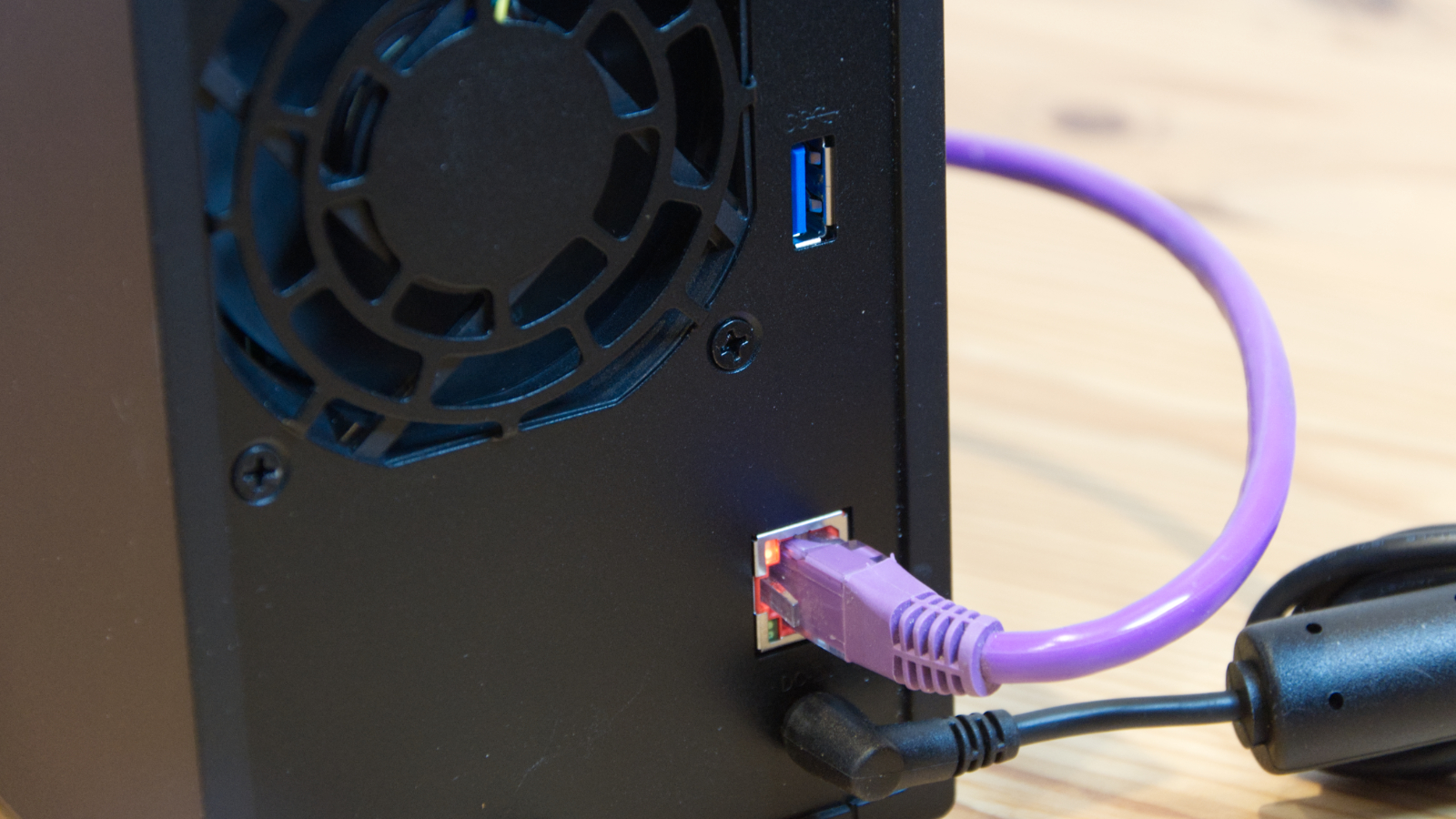
In Use
The Asustor AS1102T comes ‘barebones’ in that there are no drives installed. These you will need to source in addition to the unit, and if you intend to install two drives, then two of the size type and brand is a good idea.
One issue that we noted when we installed ours was that there are no rubber grommets or other cushioning between the physical drives and the metal frame. As a result, the frame transmits the vibrations from the drive actuators to the case, which makes this unit only the noisy side. Surely someone noticed during development how each clunk of the drives was being amplified by the lack of a few minor items costing a fraction of a penny?
The repetitive noise of this unit would annoy most people if on or under their desk, or if it was alongside the TV, for example.
This mistake is a little surprising, considering the detail present in other aspects of this design.
A decision to include 8GB eMMC flash memory enables the unit to provide a basic interface even before the drives have been initiated. A suite of professional applications has also been created for both PC and Apple Mac to get the most out of the NAS hardware for supporting network users.
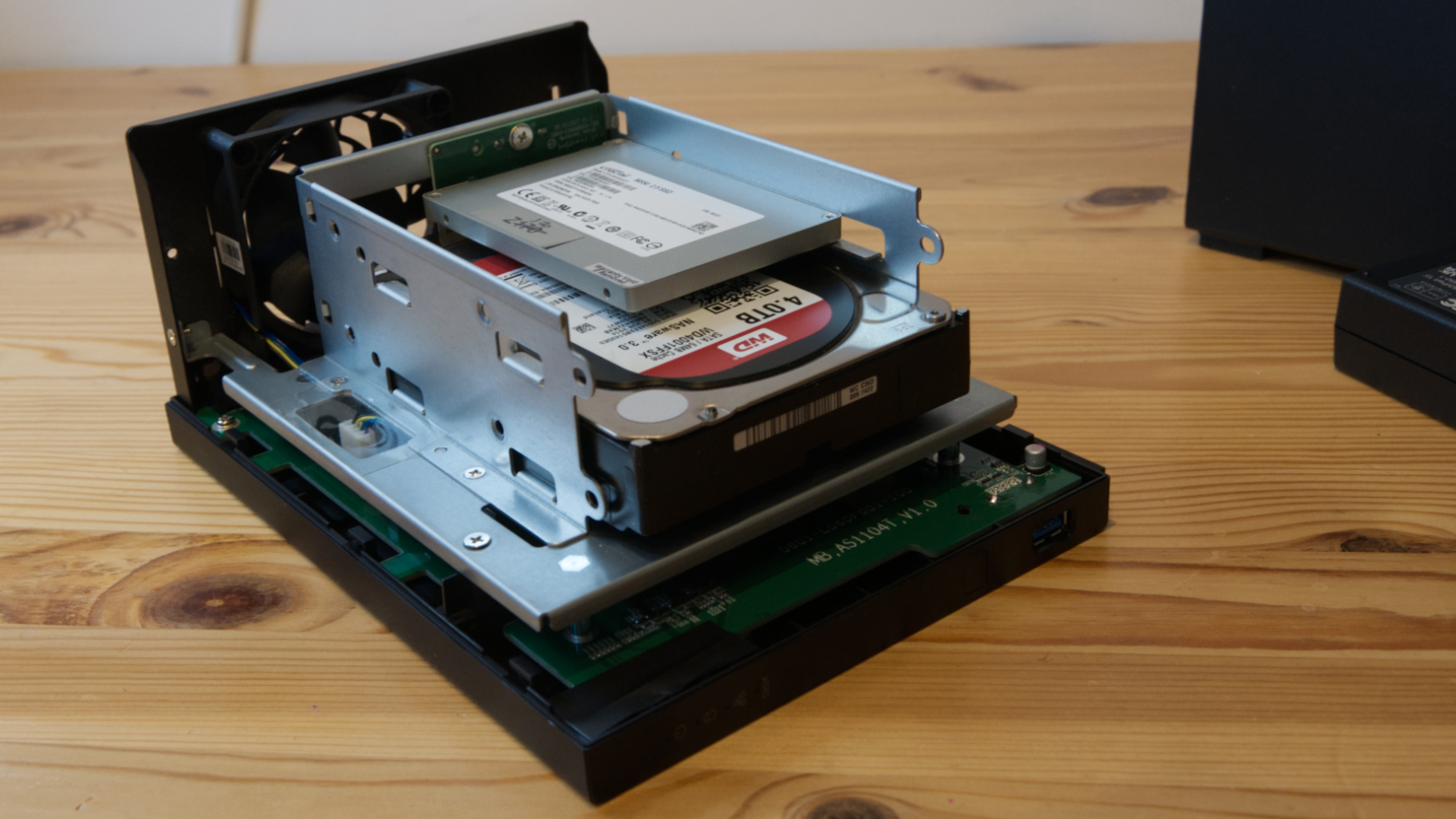
It is possible to find the network IP by other means, but Asustor has a control application built to find any Asustor NAS on the network and start the operating system installation. This methodology is common to many NAS brands, and the Asustor tool has some extra features that make it helpful to keep on the computer after the NAS is up and running.
Assumptions are made about the drive configuration by default that might need to be rectified later, but the installation wizard attempts to help the user make the right choices.
If you install two drives, it will assume a RAID 1 mirror config, though you can change this to JBOD or RAID 0 through the web interface once the system is operational.
No applications are installed by default, avoiding the need to remove those that aren’t suitable for the intended purpose.
Where Synology was once the undisputed king of applications, the Asustor selection is easily equal or even better in some respects. With 1GB of RAM, there is sufficient workspace to load numerous tools without bogging down the performance, and this is a device suitable for software developers working in Drupal, Docker, PHP or Python.
But it’s a veritable swiss-army-knife of NAS with currently 618 installable tools and applications available to use on Asustor NAS devices, and 189 of those can run on this hardware.
For those curious to see what tools they can use, the Asustor website provides an overview of the installable applications for all of their NAS hardware.
Mark is an expert on 3D printers, drones and phones. He also covers storage, including SSDs, NAS drives and portable hard drives. He started writing in 1986 and has contributed to MicroMart, PC Format, 3D World, among others.
